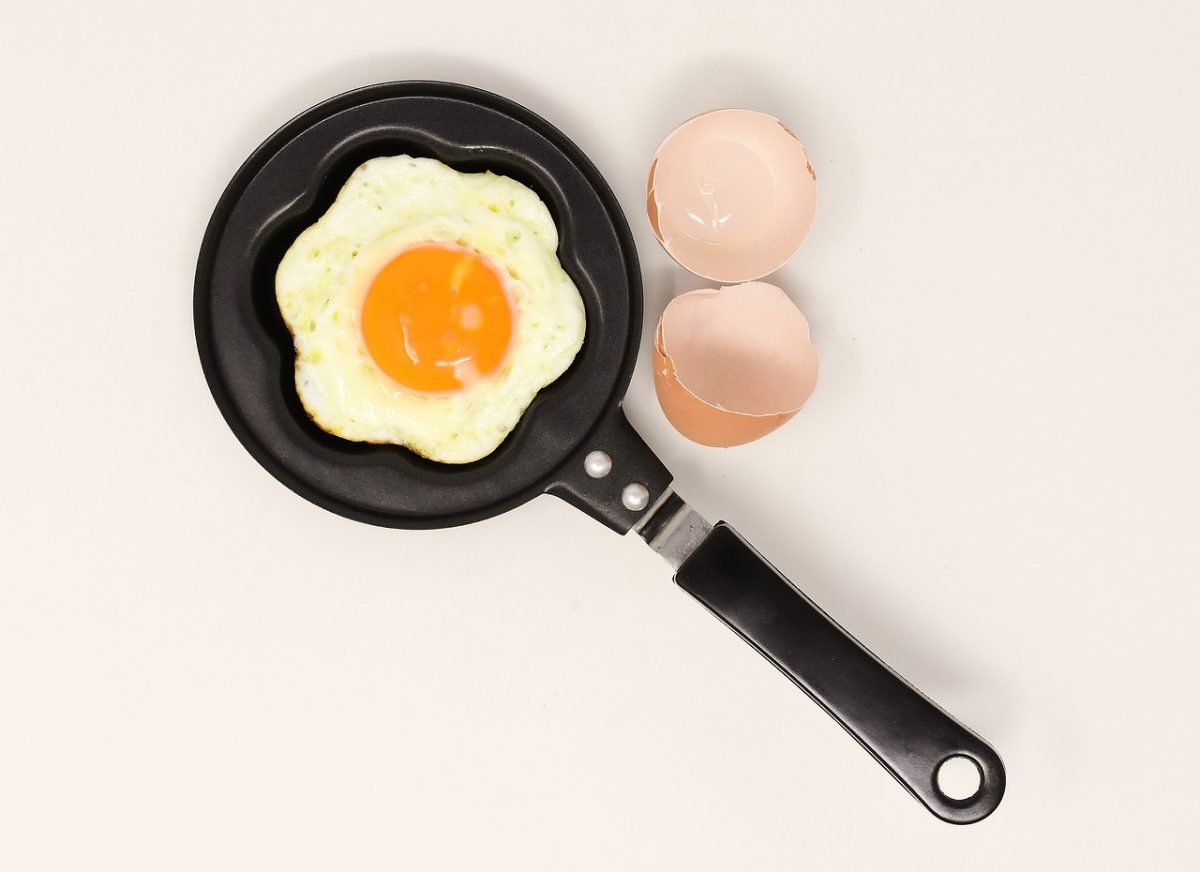As a sunny-side-up connoisseur, when my friend boasted about cooking the best eggs, I happily volunteered to critique their dish. The result? A below-average-looking sunny-side up with a burst yolk, undercooked jelly-like whites, and edges that were soggy and limper than desired. After looking at the egg for a mere four seconds, I had already determined that it was a catastrophe. But one bite of this flabby dish completely changed my mind. Despite its unappealing texture, this sunny-side-up delivered a flavor so profoundly rich, salty, and mildly acidic. I could not fathom how something so textually flawed could taste so umami.
As I ferociously forked and stuffed the egg into my mouth, the glittery salt dusted on the surface caught my attention. There was something iridescent and almost euphoric about its shimmer. I didn’t know salt had that kind of property.
It doesn’t. It was MSG.
Monosodium glutamate, commonly known as MSG, is a chemical flavor enhancer added to savory foods, ranging from certain restaurant dishes to ultra-processed soups, canned goods, dressings, and more. Do you wonder why Doritos, instant noodles, ketchup, and Pringles taste so…robust? It is the magic of MSG. MSG on its own does not taste like much, but when added to other food, it enhances the flavor profile, providing a rich, salty, and savory flavor. MSG has the power to transcend our perception of the flavoring of an otherwise bland dish.
In 1908 in Japan, scientist Kikunae Ikeda became the first to cultivate MSG with the aim of replicating the savory, umami taste of kelp in his wife’s cooking. He described the flavor of food containing MSG as umami, which is now known to be the fifth taste after salty, sweet, sour, and bitter. In addition to coining this term, he patented the method of cultivating MSG, and within a few years, MSG squealed its way into the shelves of Japanese households, under the brand name Ajinomoto. MSG later became successful in other Asian countries such as Taiwan, China, and Singapore, eventually making its way to the United States as a “staple” for “Chinese cooking” by the 1930s. In the U.S., MSG garnered attention for its role in restaurants selling prepared Chinese food, and less for its use in American manufacturers of processed goods.
Beneath the shimmer of MSG rests a somber history of misinformation and xenophobia. The question of the safety of MSG was first raised in 1968 when the New England Journal of Medicine published Doctor Robert Ho Man Kwok’s letter about the several effects—including headaches, nausea, sweating, and chest pain—he had experienced after eating prepared Chinese food, with the heading “Chinese Restaurant Syndrome.” This offensive term was swiftly adopted by the public, spreading the idea that Chinese food is irrefutably dirty and dangerous. Fear rippled across the U.S., leading not only to the stigmatization of Chinese food but fueling xenophobia against Asian communities, further marginalizing an already vulnerable group.
Despite these allegations, the U.S. Food and Drug Administration has declared MSG as “relatively safe to eat”. As of today, there is little evidence supporting the idea that MSG is harmful. Earlier studies that had established a correlation between these side effects and MSG were unreplicable, and more recent studies have been unable to conclusively prove that MSG causes harmful health effects. However, due to misinformation, personal biases, and reluctance towards chemical additives, its use is still controversial.
When I saw that glittery MSG on my sunny-side-up, I wondered: is it cheating to use food additives such as MSG in cooking? Shouldn’t a truly talented chef be able to create delicious dishes without needing to rely on chemical additives? I recognize that these questions are flawed, given that determining what makes a talented chef is subjective and difficult to measure. Yet, I find myself unable to resist asking them, as my loose thoughts about the use MSG are yearning to be solidified.
So, what about the cooks who do not have access to ingredients naturally rich in umami flavors? Chefs who face financial barriers may not have higher quality ingredients like juicy chicken thighs and fresh mushrooms at their disposal, and consequently, may rely more on MSG to add depth to their dishes. Everyone, regardless of their financial position, deserves to experience the symphony of flavors that umami-rich food creates in our mouths, even if that is done through the extra sprinkle of MSG.
But what about the chefs who do have access to umami-loaded ingredients? The famous Korean-American chef David Chang supports the use of MSG, viewing it as a tool that paves the way for innovative approaches to cooking and to put it simply, “makes food taste delicious”. Several other chefs make efforts to embrace and vocalize the use of MSG in their dishes to reshape the narrative and destigmatize its use.
MSG has burrowed itself into the culinary realms of so many different cultures, so to completely condemn it is to undermine the technique, interwoven cultural practices, and hard work that goes into cooking dishes with MSG.
Although I will not permit the use of MSG in the eggs that I critique, I do enjoy it sauteed into fried rice or powdered into that electric, orange dust on a crunchy Dorito. I choose to look at MSG’s power to elevate the flavor profile of food as a fascinating scientific discovery that expands culinary perimeters. Regardless of personal feelings towards this sparkly flavor enhancer, it is crucial to gain a broad understanding of what it is and to educate oneself on its history of misrepresentation when approaching the conversation of MSG.







